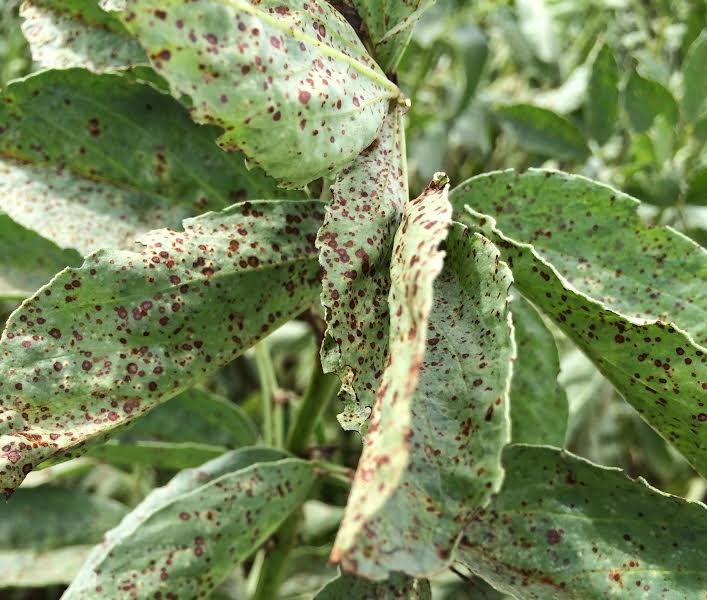
Growers are being urged to keep an eye out for chocolate spot and rust infections due to the contrasting weather conditions the UK has experienced recently.
With the current spell of wet weather bringing an abrupt end to a long period of dry, almost drought-like conditions, growers are being urged to protect beans from chocolate spot and rust infections.
That is the warning from crop protection company Adama. Its fungicide expert, Andy Bailey, advises that the ongoing wet weather conditions could put both winter and spring bean crops at risk of infection from bean chocolate spot (Botrytis spp.).
“Winter sown beans are typically protected against chocolate spot with a two-spray programme starting at the early flowering stage, usually in early May,” Mr Bailey explained.
“This year the weather was dry during that period so crops weren’t under too much pressure. For spring beans, fungicide treatments are yet to get underway, but that doesn’t mean growers should be complacent: the onset of wetter conditions could spell trouble as there is an increased potential for the disease to develop in both crops.”
Mr Bailey also warns that bean crops could come under significant pressure from rust infections once the current spell of wet weather comes to an end and temperatures start to rise.
What is chocolate spot?
Chocolate spot is caused by two species of the fungus Botrytis. Botrytis fabae is the most common cause and only affects broad beans. Botrytis cinerea can cause very similar symptoms, and this fungus also causes grey mould on a very wide range of plants.
Chocolate spot can be very damaging, in some cases causing flower loss, with severe attacks resulting in whole plant collapse. It is worse in cool, damp, overcrowded conditions.
This disease appears from late winter on autmn sown crops, but is seen from mid-spring on spring-sown broad beans.
No other beans including runner and French beans are affected, although common vetch and agricultural field beans sometimes used as green manures can be infected.
